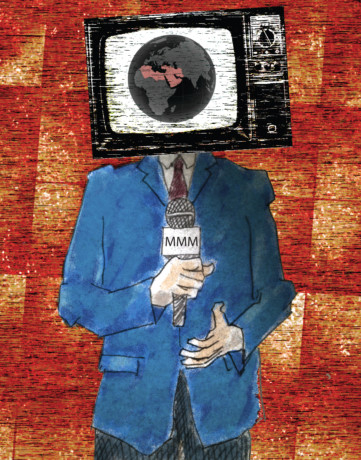
“Half the money I spend on advertising is wasted; the trouble is I don’t know which half” ...
If John Wanamaker, the originator of that quote back in the later part of the 1800s, were alive today, he might well be not so baffled by how to measure the RoI (return on investment) of his advertising dollars. Science and statistics have developed in the proceeding century allowing us to measure to a high degree of accuracy the returns on sales driven by media channels, placements, and creative executions to allow for very precise attribution of marketing investment across media tactics — including the very fragmented digital.
Nielsen’s Marketing Mix Model (MMM) is one of these, and is used to dissect the impact of spends, to improve the planning and buying of advertising campaigns. For the first time, after completing more than 250 MMM studies across the Middle East and Africa, Nielsen has aggregated the results in a meta-analysis to drive understanding in the region about media spends, investments and strategies that will inform any marketing decision.
Meta-analysis learning
Trade spends represented just over a quarter of the total marketing budget as revealed in the studies, and seen to be increasing over time. This is a result of the trade war on promotional offers targeting short-term wins that erupted across the region last year.
Across the 250 brands measured, base sales contributed on average to 83 per cent of total sales, with media and trade at 5 per cent and 12 per cent respectively. While media contribution was fairly stable over the past three years, the contribution of trade has increased at the detriment of base contribution.
From this, it is evident that trade investments absolutely do drive higher sales in the short term, but at what cost? They represent a very short-term plan and precede decreases in brand equity, encourage forward buying and store switching, as well as erode away price elasticity. The impact media has on short-term sales is much less direct, but it has long been proven that media builds brand equity and base sales in the long term, enabling opportunities to execute pricing strategies.
Delving into the impact of media channel, the RoI for digital (at $1.80 return for every $1 spent) was greater than the RoI for TV (at $0.90 for every $1 spent), although in the context of digital advertising being considerably cheaper to purchase, and saturation levels being considerably lesser than TV.
While digital offers the biggest RoI in this context, TV remains king in capturing the biggest part of the media spend. It was revealed that TV accounted for 58 per cent of total media spends in the Middle East and Africa (even higher in Saudi Arabia at 83 per cent). Digital accounted for less than 7 per cent of total media spends for the campaigns analysed (and only 2 per cent in Saudi Arabia).
This is significantly lower than in many other markets — in the US for example, digital spends account for an average of 16 per cent of any given campaign. This will likely change significantly in the region, with digital increasingly growing in dollars spent on media plans.
Does this mean that marketers should shift all their TV investment to digital? Probably not, as this is more of a gradual process. According to another Global Nielsen study conducted on 873 ad campaigns, the average TV reach delivered was 58 per cent while digital was just 2 per cent.
So, while digital offers a highly targeted audience, it does not necessarily offer the same scalability as TV for reaching large audiences; digital spend will come to saturation much quicker than TV. The trick is to find the “investment sweet spot” for each marketing tactics — the optimal investment that makes marketers’ spend work the hardest for each campaign across the different media tactics!
It’s about balancing art and science to get the most out of your marketing spend!
As far as RoI is concerned, it all boils down to execution. A poorly executed campaign on Digital will give a similar RoI to TV. However, if well-executed, the RoI for a digital campaign will outperform TV by up to 50 per cent. This is no surprise as another Nielsen study also revealed that up to 47 per cent of a campaign’s success is driven by its creative.
So, how do you get the right mix?
TV investment is still key for brands, and drives the biggest sales volumes. TV investment should be protected as it has the widest reach. Achieving TV sufficiency is critical, especially for mass market brands.
The extra budgets should be allocated to digital and other media spend. Digital has now become a must-have for any media mix, and the strong RoI vs. spend ratio means that increased digital spend is justified for virtually all brands.
There’s a big opportunity to optimise digital within tactics — while each category/country/industry is different, marketers should strive to achieve a healthy balance of investments and impressions by gradually bringing their digital spend at 15-20 per cent of their total media investment. Getting the right media mix is a test and learn exercise, while being mindful about over-execution.
Terence Colle is Head of Sales & Marketing Effectiveness, Africa & Middle East at Nielsen. Mike Gerousis is the company’s Director — Advanced Analytics, Africa & Middle East.












